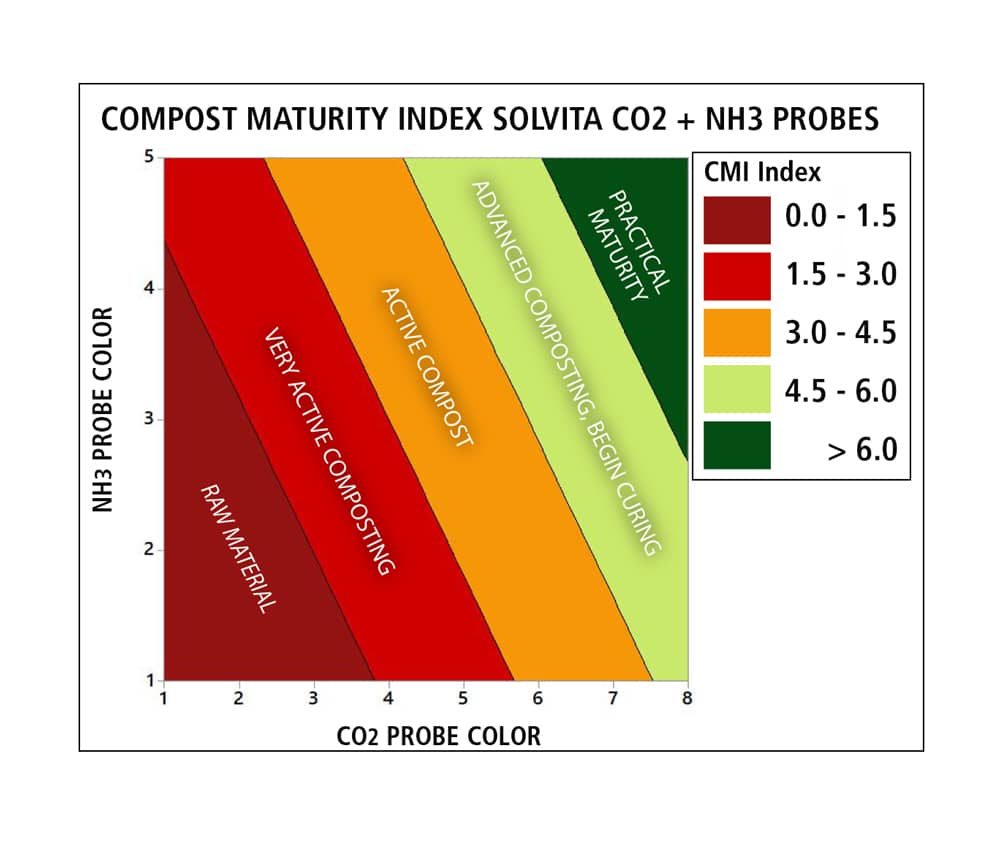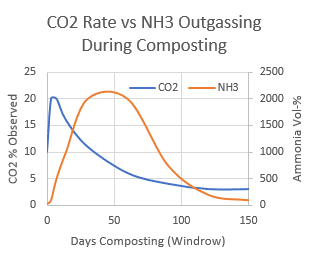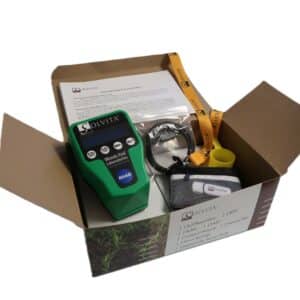Compost Maturity Index – CMI Calculator
For Compost Maturity Index
Compost Maturity Test:
More Than Just One Factor
The Solvita® Compost Maturity Test employs both CO2 and NH3 probes simultaneously to measure compost, a protocol recognized worldwide for validating compost stability and maturity. The simple, dual procedure is based on the concept of “triangulating” maturity, since single tests may not necessarily correctly identify true stability. Miscalculating when compost is mature should be avoided since customers rely on a product being stable and compost manufactures need to properly determine when compost activities may be terminated.
Composting organic matter produces large quantities of carbon dioxide (CO2) which is released into the atmosphere. At the same time, the decomposition of proteins and urea often creates large quantities of free ammonia (NH3) which also escapes as a gas. The end-stage of composting is signified when both these factors have declined to reasonably low levels.
While the cycles of CO2 and NH3 often occur together during composting they are not necessarily closely linked. It is common that the NH3 cycle may outlast the CO2 cycle somewhat (see chart). True stability happens when both these two factors converge at low levels.
Solvita® is perhaps the only commercial method to measure these combined traits in the form of a simple field-test. For laboratories wishing to perform the test and report actual quantitative values, the is available to improve precision of color determination. The Compost Maturity Index has been traditionally determined by using a simple coordinate-lookup table printed in the .

The CMI Calculator
The is now available that automatically determines the actual Index. Using CMI helps avoid ambiguous classification. CMI is a macro-enabled spreadsheet and reporting tool that uses a statistical multi-regression model to calculate the Compost Maturity Index precisely (see inset image). It is based on the interaction of both CO2 and NH3, and accounts for the negative effect of NH3 on Solvita CO2 early in composting and properly anticipates the mutual decline that make for high end-quality. The chart at right shows the factorial model that gives the 5 main grades or levels of maturity, recognizing Practical Maturity Grade 6 and above, as the acceptable model. Determining the CMI is especially helpful in combination with making more precise readings with the Solvita DCR which measures CO2 and NH3 in continuous units, but may be used by anyone performing a compost test.





